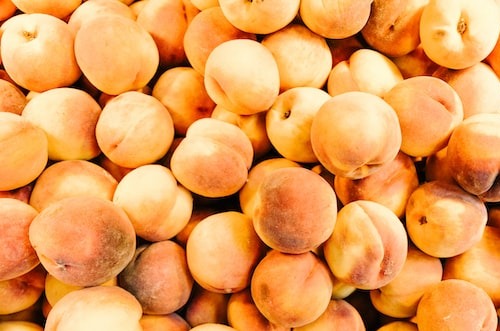W32: Peach & Nectarine Update

In W32 in the peach and nectarine landscape, Tridge’s analysis indicates that Spain's donut peach, peach, and nectarine markets have slowed down due to product oversupply. The Spanish Ministry of Agriculture forecasts a 2023 stone fruit harvest of 1.22 million metric tons (mmt), a significant 29% year-on-year (YoY) surge. The Catalonia and Aragón regions are expected to register a remarkable 40% YoY increase in output. The Spanish donut peach oversupply resulted in price drops in Aragon and Catalonia. In W2 of Jul-23, Spain had the lowest average wholesale peach prices at USD 1.11/kilogram (kg), significantly lower than France with USD 2.32/kg and still below Italy's levels of USD 1.41/kg. Despite a recent stall in the Spanish peach trade due to abundant supply, traders are optimistic for the coming weeks, expecting prices to rise in their favor.
Early in Spain's 2023 stone fruit campaign, challenges arose due to adverse weather conditions impacting the Valencian community and Murcia. This led to lower peach and nectarine availability early in the season. In Spain, the cultivated peach and nectarine area has decreased by nearly 15% in the last five years. The decrease in peach and nectarine production in Spain over the past few years is partly attributable to rising production costs, increasing by 27% per hectare (ha) and kg since 2016.
According to the Federal Office for Agriculture and Food (BLE), the German peach and nectarine market was primarily dominated by Spanish fruits in W32. The Italian and French peach and nectarine products also played a significant role. The combination of adverse weather conditions and holiday periods contributed to a reduction in demand. Although peach and nectarine supply was marginally limited, it generally remained higher than demand.
Lastly, adverse weather conditions across the United States (US) significantly impacted the peach crop in 2023. From cold spells in the Midwest to warm weather in the South, Southern Illinois and major peach-producing states like Georgia and South Carolina faced challenges, leading to a national shortage. The National Peach Council highlighted the notable impact of decreased peach yield from the south, which usually contributes a substantial market share. Georgia's 2023 peach production is down by around 90% to 95%, while South Carolina's production volumes are down by 60% to 70%. Georgia's Peach Council indicates that 2023 stands as the worst for the state since 1955, causing a ripple effect that affects farms, employees, transportation companies, and retail partners.



